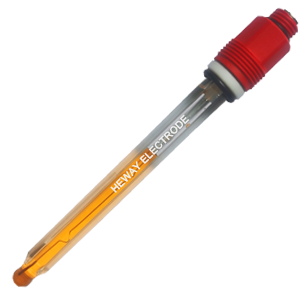 判断pH电极是否损坏或需要更换,可通过以下指标综合评估:
判断pH电极是否损坏或需要更换,可通过以下指标综合评估:
一、性能参数测试
校准斜率异常
理论斜率应为59.16 mV/pH(25℃),若实测斜率<48 mV/pH或低于理论值的80%(如<47.3 mV/pH),表明电极灵敏度较差,建议更换。
两点校准时,斜率正常范围应为95%~105%,若<90%性能较差。
零点电位漂移
在pH 7.01缓冲液中,零点电位应稳定在0±30 mV(Ag/AgCl参比系统),若超出±60 mV需更换。
切换至mV模式测量pH 4.01缓冲液时,正常电位应为170±30 mV,异常则电极失效。
响应时间延长
新电极响应时间通常<30秒,若在缓冲液中需>1~2分钟才能稳定,说明性能下降。
二、外观与物理状态
敏感膜破损
玻璃球泡出现裂纹、划痕或明显磨损,直接影响H⁺响应。
液接界堵塞
参比电极液接界处有结晶(如KCl沉淀)、污染物堵塞或电解液渗漏。
电极引线故障
使用万用表检测引线短路/断路,或出现接触不良。
三、实际测量表现
读数不稳定
静态溶液中pH值持续漂移(如波动>±0.1 pH)或无法归零。
重复性差
多次测量同一溶液时偏差超出允许范围(如>±0.1 pH)。
校准失败
无法通过标准缓冲液校准,或校准后测量已知样品误差显著。
四、维护历史与环境因素
使用时长
常规条件下电极寿命1~2年,高温(>60℃)环境可能缩短至3~6个月。
污染情况
经清洗(如0.1Mol HCl浸泡、专用清洗剂处理)后性能仍未恢复。
操作建议
交叉验证:若怀疑电极故障,可用新电极对比测量同一样品。
定期检查:建议每周校准,并记录斜率变化趋势。
- 上一篇:超声波(污泥界面仪)泥位计的安装注意事项
- 下一篇:pH电极的结构和分类





